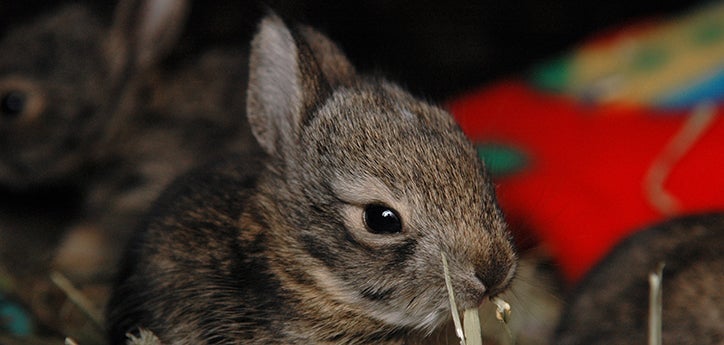Recognizing the Requirement for Animal Control Burlington in Urban Environments
Recognizing the Requirement for Animal Control Burlington in Urban Environments
Blog Article
Reliable Wild Animals Removal Techniques for a Peaceful Home Atmosphere
In the search of preserving a calm living area, homeowners frequently deal with the difficulty of wild animals intrusions, which can interfere with the harmony of their setting. Executing efficient wild animals removal methods requires a nuanced understanding of both humane exemption methods and preventative measures.
Identifying Common Wild Animals Intruders
Identifying common wild animals intruders is an essential initial action in efficient wildlife management. Comprehending the details species that often infiltrate domestic and industrial rooms allows residential property owners and wild animals experts to carry out targeted techniques for reducing possible damages and wellness risks. Usual intruders commonly include raccoons, squirrels, bats, and numerous types of rats and birds, each bringing distinct obstacles.
Bats, while helpful for regulating insect populations, can come to be an annoyance when they roost in attic rooms, potentially spreading out illness such as histoplasmosis. Birds, consisting of pigeons and sparrows, commonly produce unhygienic conditions with their droppings, leading to architectural degradation and health and wellness worries - animal control Burlington.
Humane Exclusion Strategies
Understanding the usual wildlife intruders is the foundation upon which reliable exclusion approaches are constructed. Recognizing varieties such as squirrels, birds, and raccoons helps in creating gentle exemption techniques customized to details habits and access approaches. Exclusion is a preventative approach focused on denying wild animals access to residential properties and homes, thus reducing the requirement for even more intrusive measures.
The cornerstone of gentle exclusion involves securing prospective entry points. This includes repairing holes in wall surfaces, foundations, and roof coverings, in addition to installing smokeshaft caps and air vent covers. For smaller sized intruders like computer mice and bats, utilizing products such as steel wool and caulk to seal spaces is necessary. Furthermore, guaranteeing that home windows and doors are safe and secure, which displays are intact, can better deter entrance.
An additional key technique is using aesthetic and auditory deterrents. Mounting ultrasonic devices or motion-activated lights can dissuade nocturnal wild animals. Modifying the habitat by taking care of food sources, such as securing trash can and getting rid of bird feeders, additionally plays a crucial duty. These exclusion methods not just protect the home setting however likewise respect the wild animals, allowing them to thrive in their natural environments without damage.
Safe Capturing Methods
When exemption techniques are inadequate, safe capturing approaches come to be a necessary option in wild animals administration. Trapping, when carried out correctly, uses a humane and reliable ways of dealing with a prompt wild animals issue while making certain marginal anxiety and harm to the pet. This strategy needs an understanding of both the habits of the target types and the moral factors to consider included in wildlife handling.
The initial step in safe capturing involves picking the ideal catch type. Live catches, such as cage traps, are usually suggested as they enable for the capture and launch of the animal elsewhere. These catches need to be inspected frequently to stop unnecessary stress or injury to the recorded wild animals. It is critical to comply with regional laws pertaining to trapping and relocation to make certain conformity with lawful requirements and wild animals conservation principles. burlington wildlife rescue.
In review addition, lure option and positioning are essential elements in making sure successful capturing. Bait needs to be picked based on the nutritional choices of the target species and purposefully positioned to lure the animal into the catch. Once trapped, the pet must be managed with treatment, utilizing safety equipment if essential, to facilitate secure transport and release, therefore maintaining a peaceful home and a balanced ecological community environment.
Preventive Home Modifications
While risk-free trapping techniques attend to immediate wildlife problems, long-term remedies typically involve preventative home alterations to deter animals from going into human rooms. Carrying out these alterations not just improves the security and comfort of your living setting yet also lowers the possibility of future wild animals breaches.
An important facet of preventative approaches is securing prospective entrance points. This entails inspecting and fixing any kind of voids or splits in the structure, wall surfaces, and roofing, as these can end up being access courses for wild animals. Setting up smokeshaft caps and repairing damaged vents can prevent birds, bats, and rats from obtaining entry. In a similar way, safeguarding doors and windows with weather removing and harmonize displays includes an additional layer of security.
Landscape design alterations can additionally offer as efficient deterrents. Cutting tree branches that overhang the roof covering and getting rid of debris stacks can remove courses and environments that draw in wild animals. Keeping a clean lawn by safeguarding garbage bins and compost heap inhibits scavengers such as raccoons and opossums.

When to Call Home Page Specialists,##.
Professional intervention comes to be important in circumstances where wild animals problems surpass the scope of DIY remedies. Homeowners may experience situations where the complexity or threat of the wildlife problem demands professional knowledge.
Additionally, invasions including protected or jeopardized types need a nuanced technique to adhere to legal laws. Specialists are outfitted with the needed licenses and understand the lawful structures regulating the handling of such species. This makes certain that elimination is conducted fairly and within legal borders.

Lastly, when wild animals poses a consistent trouble despite repeated do it yourself initiatives, expert solutions can supply detailed inspection and long-lasting pop over to this web-site remedies tailored to avoid reappearance - animal control Burlington. Their knowledge not just settles the immediate problem however additionally safeguards the home environment in the future
Conclusion
Executing effective wildlife removal strategies is essential for preserving a serene home environment. With each other, these methods produce an unified living area totally free from wild animals disruptions.

These exemption methods not only secure the home atmosphere but likewise value the wild animals, allowing them to flourish in their all-natural environments without injury.
Executing reliable wildlife removal methods is essential for keeping a tranquil home atmosphere.
Report this page